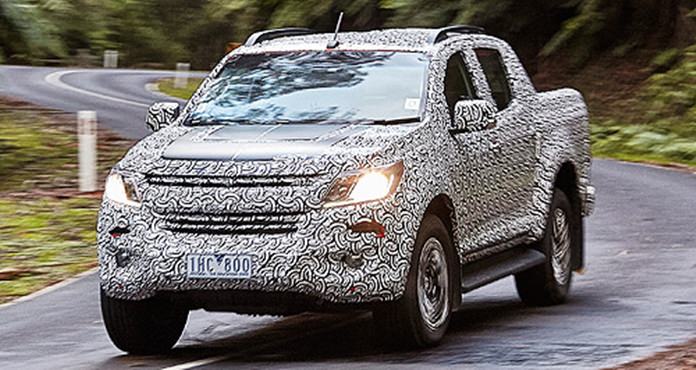Australian engineers have worked with international General Motors colleagues to iron out wrinkles in the Colorado pick-up’s steering, suspension and refinement levels for the facelifted version that will be revealed on September 1 to take up the fight with a flock of tough rivals in the booming light truck market.

Although GM Brazil is the global “home room” for Colorado development, the Australian branch of GM has revealed it not only co-developed the revised model but also hosted the final development drive – dubbed the 100 percent buy-off ride – by GM representatives from Brazil, Thailand, India, the United States and Europe, as well as Australia, about eight months ago.
The international contingent belted the pick-up along Australian bush tracks, back roads and highways before signing off on the production version that was developed in response to customer feedback about the current version that was launched in 2012.
The new-look Holden Colorado is already rolling off the Thai production line in readiness for the September launch that will be followed almost immediately by the debut of its similarly upgraded SUV sibling, formerly called Colorado 7 but now going by the international moniker of Trailblazer.
Apart from working on the revisions at the Lang Lang proving ground in Victoria, Holden engineers travelled to Brazil to help with the Colorado engineering program that has wrought major changes to the chassis and powertrain to induce what Holden claims is “car-like refinement and improve driveability” in the latest version of the Thai-built one-tonne pick-up that is sold under Chevrolet badges in other markets.
Electric power steering with a faster steering rack, progressive front and rear dampers, revised spring rates, a thicker front stabilizer bar and different tyres are among the major chassis changes.
Powertrain engineers even shifted the balance shaft on the 2.8 liter diesel engine as part of the noise, vibration and harshness (NVH) improvement measures that also include a new automatic transmission torque converter, revised engine and transmission mounts and anti-noise shielding on the diesel injectors, timing cover and oil pan.
The new Colorado has a central pendulum absorber (CPA) type that is usually seen on premium diesel passenger cars. The CPA converter helped to reduce engine noise and vibration by cancelling out torsional vibrations normally felt in the cabin.
“The added benefit to the CPA is the ability to apply a revised transmission calibration strategy with results in driveability and fuel economy improvements.” Development engineer Ms Watt said GM has focussed on improving refinement and drivability.
“We’ve also had the benefit of international experience, as the Colorado program was a co-development project between GM Brazil, GM Thailand and Australia – a great example of the type of engineering work Holden will be responsible for in the future.”
Although the Colorado’s diesel engine has had a balance shaft modification, it retains the same level of performance, with 147 kW of power and 500 Nm of torque in the automatic transmission-equipped variant. The manual version’s engine is detuned to 440Nm of torque, but gets a new final drive ratio for improved drive quality, particularly while towing.
The new Colorado will also get new safety features such as rearview camera and driver’s knee airbag across the range. Selected models will have forward collision alert, lane departure warning, front and rear park assist and tyre pressure monitoring.
For those into entertainment, the new Colorado has the upgraded MyLink infotainment system and gets Apple CarPlay and Android Auto and 7.0- or 8.0-inch color screens with Bluetooth streaming and DAB+ radio as standard.
The current model is the third best-selling pick-up in Australia behind the top-selling Toyota HiLux and second-placed Ford Ranger.
It will be interesting to see if these fairly minor changes will woo customers away from arch-rival Ford with its Ranger.




